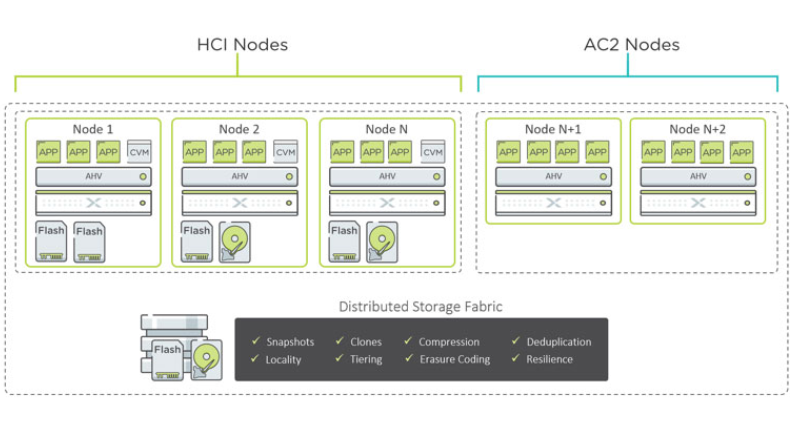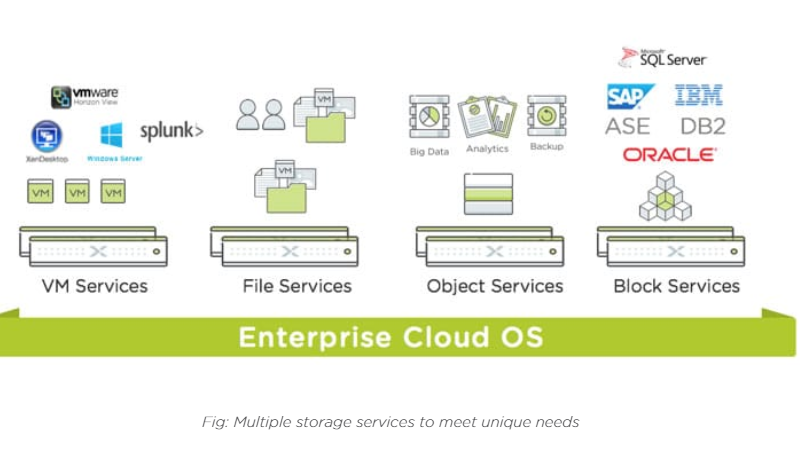
Nutanix has been on a journey for well over a year to transform itself from a supplier for software for hyperconverged infrastructure to a company with a platform that allows enterprises to build private datacenter environments that give them the same kinds of tools, automation, agility, scalability and consumption options that they can find in public clouds like Amazon Web Services and Microsoft Azure.
Nutanix was one of several vendors whose software helped propel the fast-growing hyperconverged infrastructure space through partnerships with such top-tier system OEMs like Dell EMC, IBM and Lenovo, and is among the last independent companies standing, with SimpliVity being scooped up by Hewlett Packard Enterprise for $650 million and Cisco Systems buying partner Springpath, both deals closing this year. But Nutanix officials made it clear last year – as the company moved toward an IPO, which eventually happened in September 2016 – that they had ambitions beyond the hyperconverged space.
They saw an opportunity to give enterprises the advantages of public clouds while enabling them to control and secure the data in the modern workloads running in their own datacenters. The result has been Nutanix’s Enterprise Cloud platform, which includes a distributed infrastructure, an operating system, developer services and the ability to move applications between clouds, hypervisors and containers. The vendor began building it out in the summer of 2016, with offerings like its Acropolis Container Services for containerized applications and microservices and Acropolis Block Services, enabling databases running on servers from the likes of Dell EMC, HPE, Cisco and Lenovo to leverage its Acropolis Distributed Storage Fabric.
Nutanix also grew its capabilities through the acquisitions of PernixData for scale-out data analytics and acceleration and Calm.io for DevOps automation. As The Next Platform discussed last year, the twin deals were important in helping the company build out a platform that could compete with the likes of VMware and push back against innovations by software vendors like Microsoft and Red Hat. Later in the year, at the company’s .NEXT show, Nutanix brought application-centric visualization into the network for its cloud platform, giving users a single view of the growing numbers of workloads and data running over the network. Given the amount of data being generated by such trends as the internet of things (IoT) and the rise of mobile-first apps, visibility into the network has become crucial to customers using cloud environments.
The first year as a public company has worked out, according to founder, Chairman and CEO Dheeraj Pandey. During a conference call in August to talk about the latest quarterly financial numbers, Nutanix generated $767 million in revenue, a 72 percent increase from the same time period the year before. Software-only bookings jumped 96 percent and AHV adoption increased 214 percent.
“Our customers are moving past the initial hype of a public cloud-only world to a definition of cloud that is more nuanced around automation, commodity hardware, web-scale engineering, consumer grade design and hybrid consumption,” Pandey said during the call, according to a transcript from Seeking Alpha.
Nutanix now is adding more services for its Enterprise Cloud OS to better enable developers to create applications that enterprises can use in multi-cloud environments. The company also is including another compute service based on Nutanix’s AHV built-in hypervisor that will make it easier for Nutanix customers to deliver compute-intensive applications such as distributed analytics, large-scale front-end web service and advanced in-memory analytics. Enterprise Cloud OS can run not only on Nutanix appliances but also on systems from HPE, Dell EMC, Lenovo, IBM and Cisco. Through the software, customers can scale compute and storage independently to meet the need of specific workloads. The company already adds what officials call storage-heavy configurations for scaling storage without touching compute in increments up to 60TB.
With the new Acropolis Compute Cloud (AC2), customers will now be able to add more compute resources to Nutanix clusters to address the newer CPU-intensive applications and give developers a way to scale up or down their infrastructures.
“AC2 allows Nutanix customers to drive infrastructure utilization by expanding compute capacity independent of storage,” Raghu Nandan, senior director of product management at Nutanix, and Mike Wronski, senior product marketing manager, explained. “Providing flexible compute ‘services’ expands application workload support, including demanding big data and machine learning applications.”
Nutanix also is adding its Acropolis Object Storage Service for applications that include large unstructured data sets like big data, analytics, data warehouses and large-scale IoT environments. Developers now can use object-based storage as a native service that can collect, storage and manage billions of objects in a single namespace, officials said. It will offer an AWS S3-compatible API that will enable development teams to mimic public clouds by consuming storage as a high-performance, on-demand service and to leverage a multi-cloud storage strategy.
The amount of unstructured data is growing rapidly and challenging enterprises trying to find ways to store the data without having to think about directory structures or paths, Rohit Goyal, senior product marketing manager at Nutanix, and Priyadarshi Prasad, director of product management, says.
“The public cloud has helped in solving some of these challenges with elasticity and ease of use, but it lacks the security, control, and cost efficiencies for predictably running large-scale environments” they wrote. “This leads to inefficiencies and reduces business agility. Enterprises need a new paradigm to consume and manage data growth (terabytes in size) and in some cases doing so while maintaining regulatory compliance.”
In addition, the vendor is bringing App Marketplace services to its Calm multi-cloud application automation and orchestration solution that will enable new and existing applications to be defined via standards-based blueprints and then published into a marketplace, giving customers the chance to more quickly consume application services. Nutanix Calm also will streamline the adoption process of such tools as Kubernetes for container orchestration, Hadoop, MySQL Jenkins and Puppet by offering blueprints that developers can use to quickly move workloads into multi-cloud environments.
Nutanix is also enhancing the AHV hypervisor. The upcoming AHV v5.5 will include support for Citrix Provisioning Services for virtual desktop infrastructure deployments and integrated support for virtual GPUs.






Be the first to comment